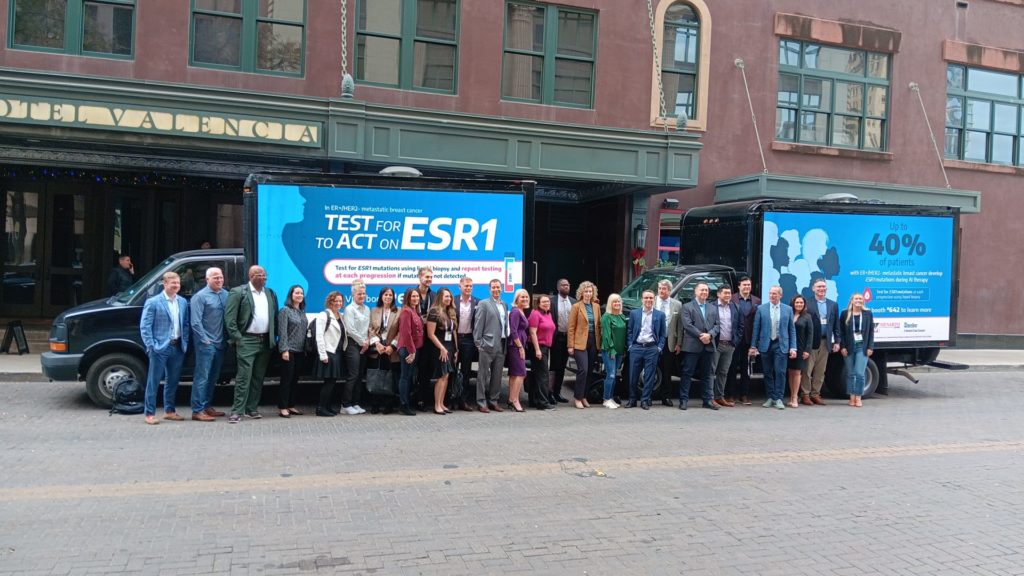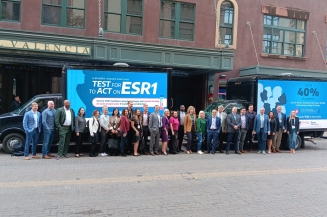2024: The Year of Digital Transformation in OOH Advertising

In the ever-evolving landscape of advertising, 2024 has emerged as the Year of Digital Transformation for Out-of-Home OOH advertising. Traditionally characterized by static billboards and posters, the OOH sector is experiencing a seismic shift as it integrates cutting-edge technologies to captivate audiences in new and dynamic ways. This article explores the key trends, innovations, and implications driving the digital revolution in OOH advertising this year.
Digital Billboards: Beyond Static Imagery
One of the most noticeable changes in OOH advertising is the widespread adoption of digital billboards. These dynamic displays replace static images with high-resolution digital screens capable of showcasing multiple ads in rotation. This allows for more creativity in ad design and enables advertisers to tailor their messages based on the time of day, weather conditions, or even real-time events.
Digital billboards leverage advancements in LED technology, providing brighter and more vivid displays that capture the attention of passersby. The ability to schedule and update content remotely enhances flexibility for advertisers, making campaigns more agile and responsive to changing market dynamics.
Programmatic OOH Advertising: Data-Driven Precision
Enter the era of programmatic OOH advertising, where data-driven insights and real-time analytics converge to optimize ad placements. By harnessing the power of artificial intelligence and machine learning algorithms, advertisers can target specific demographics, adjust campaigns on the fly, and maximize the impact of their messages.
Programmatic OOH advertising offers a level of precision previously unseen in the industry. Advertisers can leverage data analytics to identify high-traffic locations, peak times, and audience preferences, ensuring their messages reach the right people at the right moment. This shift towards data-driven decision-making marks a significant departure from the traditional spray-and-pray approach of OOH advertising.
Interactive Experiences: Engaging the Audience
Digital transformation in OOH advertising goes beyond mere visual appeal; it aims to engage the audience actively. Interactive billboards equipped with touchscreens, QR codes, or augmented reality elements invite viewers to participate in the ad experience. This not only enhances brand interaction but also provides valuable data on consumer behavior and preferences.
For instance, a cosmetics brand could deploy an interactive billboard allowing viewers to virtually try on different makeup products using augmented reality. Such immersive experiences not only leave a lasting impression but also create a bridge between the physical and digital worlds, offering new avenues for creativity and brand storytelling.
Geo-Fencing and Location-Based Targeting
The integration of geo-fencing technology has transformed OOH advertising into a hyper-localized endeavor. Advertisers can define virtual perimeters around specific locations, triggering targeted ads when users enter these predefined zones. This level of precision enables brands to deliver contextually relevant messages based on the audience’s real-time location.
Imagine a fast-food chain using geo-fencing to push ads for its newest menu items to individuals in close proximity to their outlets during lunch hours. This not only increases the likelihood of conversion but also demonstrates the power of OOH advertising to seamlessly integrate with consumers’ daily lives.
DOOH and the Rise of Digital Screens in Unconventional Spaces
Digital Out-of-Home (DOOH) advertising is expanding its footprint beyond traditional billboards. Digital screens are now finding their way into unconventional spaces such as buses, taxis, elevators, and even gas pumps. This diversification allows advertisers to reach audiences in unexpected moments, creating new touchpoints for brand communication.
The adoption of DOOH is also contributing to the transformation of public spaces, turning them into dynamic canvases for storytelling. As consumers become accustomed to encountering digital screens in various locations, the boundary between physical and digital advertising continues to blur.
Sustainability and Green Initiatives
The digital transformation of OOH advertising is not just about innovation; it also addresses environmental concerns. Traditional billboards often involve printing large volumes of materials, contributing to waste and environmental degradation. Digital billboards, with their ability to display multiple ads on a single screen, significantly reduce the need for printed materials.
Moreover, the shift towards energy-efficient LED technology and smart lighting systems minimizes the ecological impact of OOH advertising. Advertisers are increasingly aligning their campaigns with sustainability initiatives, resonating with environmentally conscious consumers and showcasing the industry’s commitment to responsible advertising practices.
Conclusion
As 2024 unfolds, the out-of-home advertising landscape is undergoing a remarkable digital transformation. The integration of digital billboards with Texas Mobile Advertising programmatic advertising, interactive experiences, geo-fencing, and the rise of DOOH is reshaping the industry’s dynamics. This evolution not only enhances the effectiveness of OOH campaigns but also opens up new possibilities for creativity and engagement.
The Year of Digital Transformation in OOH advertising signifies a paradigm shift towards data-driven precision, interactivity, and sustainability. The journey has just begun, and 2024 is poised to be a landmark year in the ongoing evolution of out-of-home advertising.
Back to Blog
